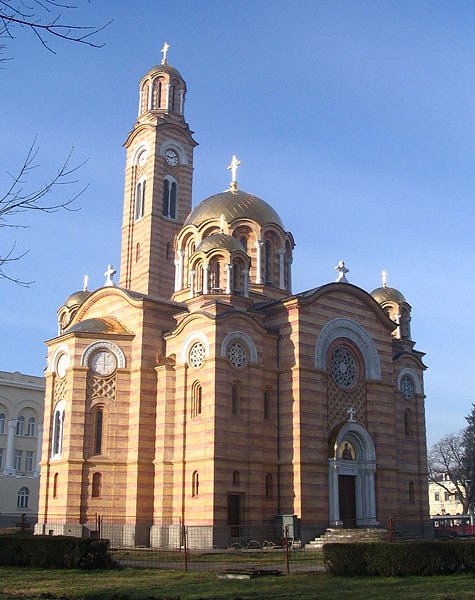 An old fortress in Banja Luka, Bosnia & Herzegovina
An old fortress in Banja Luka, Bosnia & HerzegovinaSource: https://commons.wikimedia.org/wiki/File:Kastel211.jpg
Author: Rade Nagraisalović

Banja Luka is the capital of Republika Srpska, one of the two components of Bosnia and Herzegovina. It is also the second largest city in Bosnia and Herzegovina after Sarajevo. The city covers 1,232 sq km (475.7 sq mi) and has a population of 190,000 people (2011 estimate). It observes the Central European Time (UTC+1) and in summer the Central European Summer Time (UTC+2).
Banja Luka is located on the Vrbas River, in a valley surrounded mostly by forest land. The city experiences a continental climate. July is the warmest month here, with average high temperatures of 27.2°C (81°F). January is the coldest month, when the average low temperature drops to -4.6°C (23.7°F). June receives the most rain, at 111 mm (4.37 in).
The history of Banja Luka goes back to 1494, although the area itself has been inhabited since ancient times. Slav tribes have settled there since the 7th century AD. As with the rest of Bosnia and Herzegovina, the area was ruled by the Ottomans from the 16th century until the 19th century, when the Austro-Hungarian Empire took over the rule from the Ottomans, after numerous incursions and intrusions over the centuries.
 Krupa River, Banja Luka
Krupa River, Banja LukaSource: https://commons.wikimedia.org/wiki/File:Rijeka_Krupa.jpg
Author: Rade Nagraisalović

Banja Luka was part of Yugoslavia after the Second World War until the 1990s, when Yugoslavia began to disintegrate, and it became part of Bosnia and Herzegovina. Republika Srpska came into being in 1992.
Visiting Banja Luka
There are regular bus services connecting Banja Luka with various cities in Bosnia and Herzegovina, as well as with Austria, Croatia, Montenegro, and Serbia, among others. The Banja Luka International Airport (BNX) receives flights from Zürich twice a week. There are trains to Banja Luka from Sarajevo, Zagreb, Ploče and Belgrade. Cathedral of Christ the Saviour, Banja Luka
Cathedral of Christ the Saviour, Banja LukaSource: https://commons.wikimedia.org/wiki/File:Cathedral_of_Christ_the_Saviour,_Banja_Luka.jpg
Author: Покрајац

Sights & Attractions in Banja Luka
- Banski Dvor (Governor's Palace)
This is the main cultural center in Banja Luka. It includes a concert hall and gallery. - Cathedral of Saint Bonaventure
The main cathedral in Banja Luka, with a history going back to 1887. After an earthquake destroyed it in 1969, the church was rebuilt in 1974. - Cathedral of Christ the Saviour
This is one of the biggest, most beautiful and most expensive churches in Banja Luka. - Ferhat-Pasha Mosque
The main mosque in Banja Luka, built in 1579 during the Ottoman era. It was listed as a cultural heritage in 1950. Destroyed in the Bosnian war in 1993, the mosque is now being rebuilt. - Kastel
A fort by the banks of the Vrbas River dating back to Roman times. - Monastery of Gomionica
16th century monastery housing an outstanding collection of ancient icons.
 Latest updates on Penang Travel Tips
Latest updates on Penang Travel Tips
About this website

Thanks for reading this page. My name is Timothy Tye. My hobby is to research information about places, and share the information with people on this website. I started this website on 5 January 2003, and since then, have written about over 20,000 places, mostly in Malaysia and Singapore.
Please use the information on this page as guidance only. While I try my best to provide you information that is as accurate as I can get it to be, I do apologize for any errors. Also, as I might not be able to update some information on time, some of these pages may contain outdated information.
Copyright © 2003-2024 Timothy Tye. All Rights Reserved.


 Go Back
Go Back